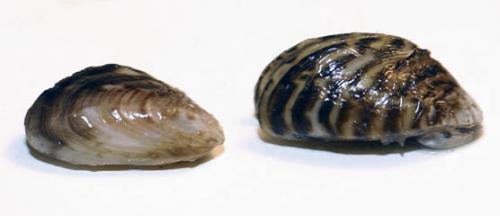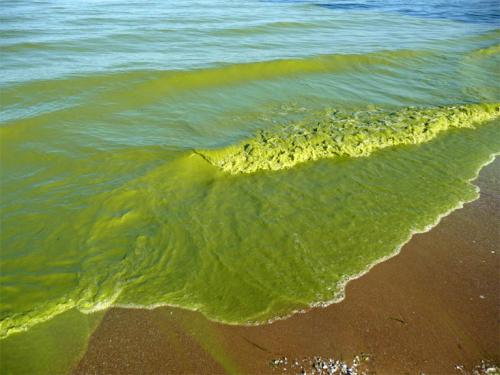Algae are a-bloomin’ but what does it mean?
Due to the recent impact of harmful algal blooms to southeast Michigan communities, many residents have questions about algae and why it may or may not be harmful.

In any healthy water body, there are dozens of micro- and macro-organisms. Algae are a natural part of an aquatic ecosystem. Throughout the course of a year, the growth of algae and other phytoplankton go through species succession. For example, from January through April, diatoms are usually the dominant phytoplankton in the water and reach their peak dominance in late April through early May. Blue-green algae, also called cyanobacteria, usually dominate the system from July to September, with peak growth in mid-August.

Due to the introduction into the Great Lakes of Dresseinid mussels (zebra mussels and quagga mussels), which filter out diatoms and green algae, there has been shift in phytoplankton in Lake Erie and Saginaw Bay to a predominance of blue-green algae.
Blue-green algae are the most common harmful algal blooms. Typically, these blooms are bright green or blue-green in color, but can also resemble scums or foam on the surface of water. These blooms are referred to as “harmful” because they are capable of producing a toxin that could impact human and animal health. If you detect an earthy or musty smell, taste or see surface scum's of green, yellow or blue-green, the water may contain blue-green algae. Examining a water sample under the microscope will confirm the presence of blue-green algae. The only way to determine if a bloom is toxic is through water analysis.
All blue-green algae can be skin irritants under certain conditions, and some can produce multiple types of the more harmful toxins. The most common species of toxic  blue-green algae in the Great Lakes are:
blue-green algae in the Great Lakes are:
Cylindrospermopsis raciborskii
In Lake Erie and Saginaw Bay, Microcystis aeruginosa is the dominant blue-green and can produce a toxin called Microcystin, which can produce symptoms including abdominal pain, nausea, vomiting, diarrhea, sore throat, dry cough, headache, blistering of the mouth, atypical pneumonia and elevated liver enzymes, hay fever symptoms, dizziness, fatigue, and skin and eye irritations.
Some general ways to keep safe are outlined in the NOAA Great Lakes Environmental Research Laboratory’s fact sheet on Harmful Algal Blooms.
• Do avoid contact with water where algae are visible (e.g. pea soup, floating mats, scum layers, etc.), or where water is discolored.
• Do rinse yourself and/or your pet off with soap and water after swimming in any ponds, lakes or streams, regardless of the presence of a visible algal blooms.
• Do obey posted signs for beach advisories.
• Do contact your local health department or state agency to report any large blooms.
• Don’t use algaecides to kill the cyanobacteria– when the cells die, the toxins are directly released into the water.
• Don’t allow children or pets to play in or drink water where scum is present.
• Don’t water-ski or jet-ski over algal mats.
Michigan State University Extension will be featuring additional information on Great Lakes HABs on its website this month. Michigan Sea Grant can provide additional information on Great Lakes HABs and other topics of interest, and Michigan Sea Grant Extension staff work with communities on planning and risk reduction strategies on a range of topics in addition to HABs. For more information specifically about HABs and other Great Lakes issues relating to human health, visit the Center of Excellence for Great Lakes and Human Health, which also provides a weekly Lake Erie HAB forecast, and is part of the Great Lakes Environmental Research Laboratory.



 Print
Print Email
Email


